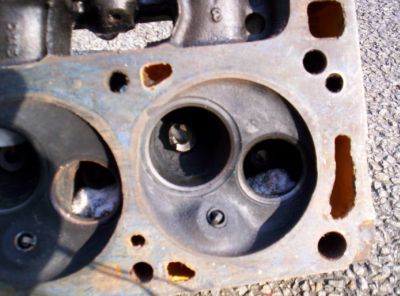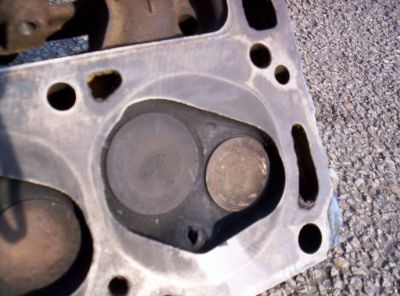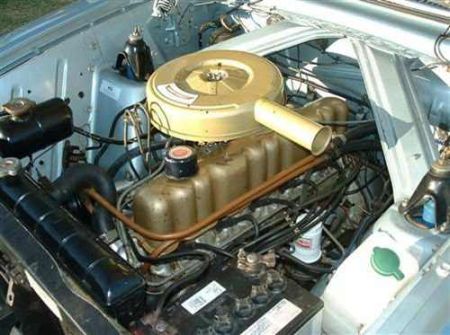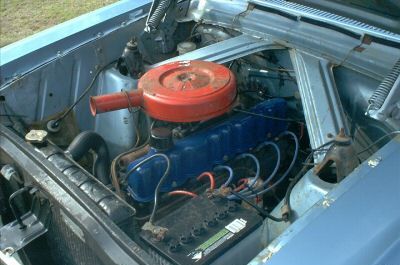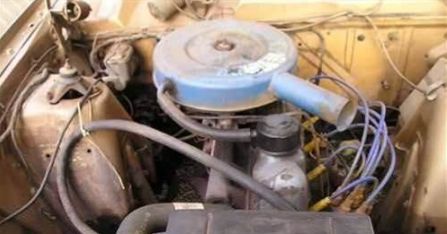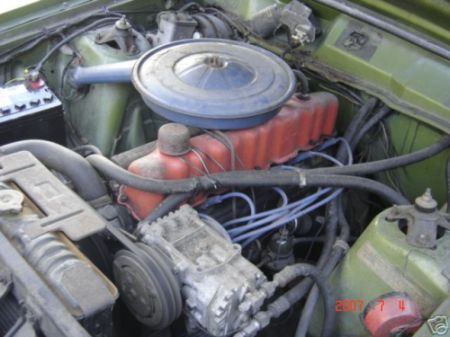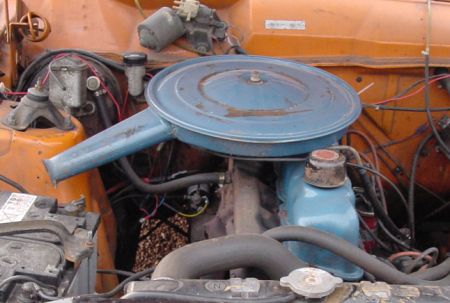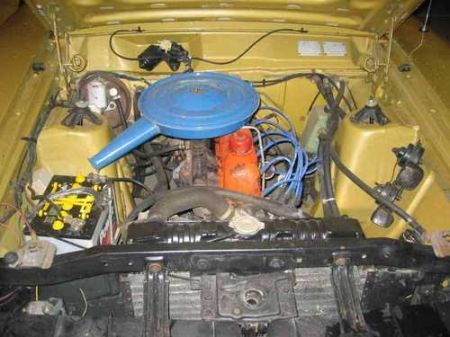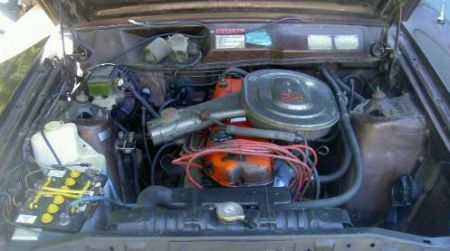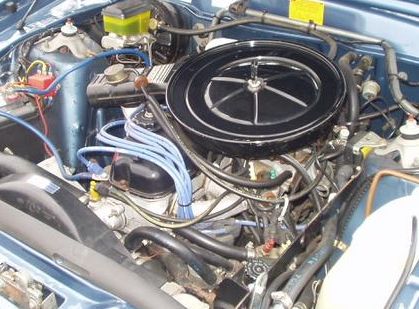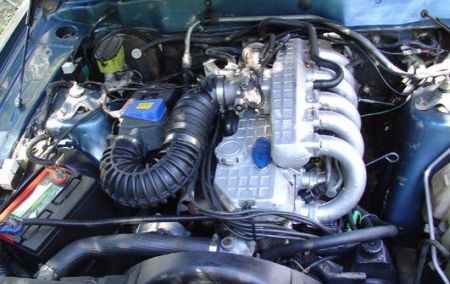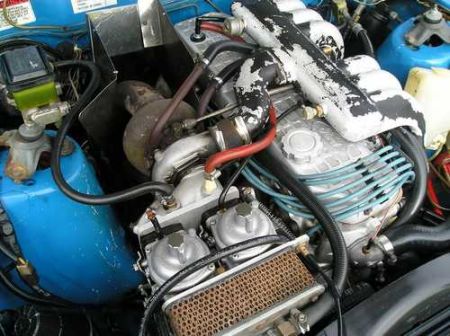|
|
|
This shows how to identify the heads when they are off the car. From the factory, Ford differentiated the two engines by painting the 302C’s rocker covers red as seen on these XA’s. |
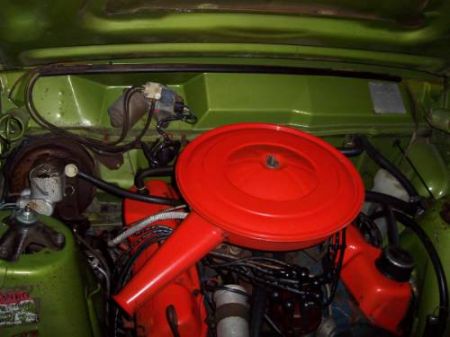 |
|||||||||||||||||||||||||||||||||||||||||||
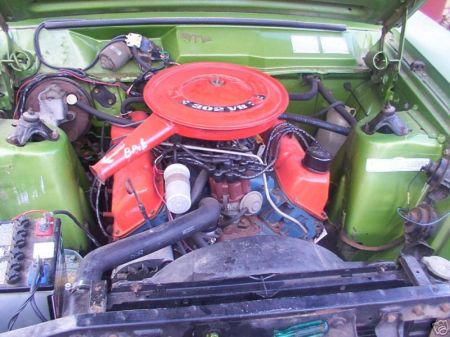 |
|||||||||||||||||||||||||||||||||||||||||||
|
These two cars have the small, shallow air cleaners and both are painted red. Both these cars are XA’s. |
|||||||||||||||||||||||||||||||||||||||||||
|
Later two barrel 302C’s fitted to XB Falcons adopted the large, ‘second’ style 4V air cleaners with non-belled mouth and non-tapered snorkel. |
|||||||||||||||||||||||||||||||||||||||||||
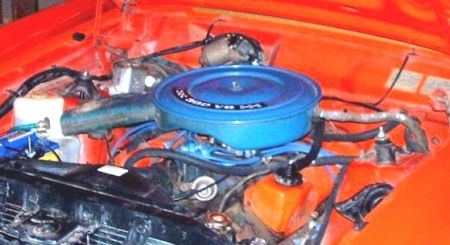 |
|||||||||||||||||||||||||||||||||||||||||||
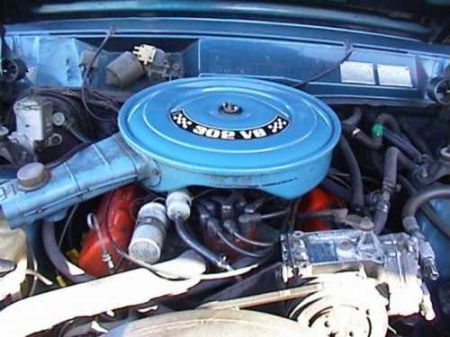 |
|||||||||||||||||||||||||||||||||||||||||||
|
But |
|||||||||||||||||||||||||||||||||||||||||||
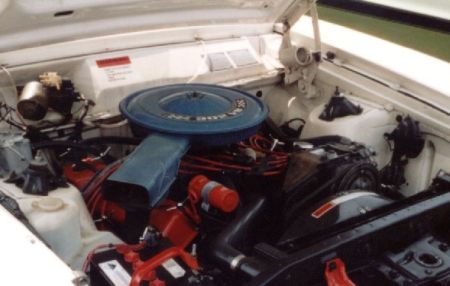 |
|||||||||||||||||||||||||||||||||||||||||||
|
This is the 302C engine fitted to a 1974 Ford Fairmont here in the U.K. It is fitted with the 351W four barrel air cleaner base, and the top from the shallow 302W or 302C air cleaner which is prominently domed and features ribs that run out like spokes from the centre. Is there any reason why it was fitted to a 1974 XB ? Did Ford have some 351W air cleaner bases left over and fit them to cars ? Is it a mistake ? Does anyone have any information about this ? Please get in touch. |
|||||||||||||||||||||||||||||||||||||||||||
|
Here is a photo of another - different - July, 1974 302C powered XB fitted with same air cleaner. |
|||||||||||||||||||||||||||||||||||||||||||
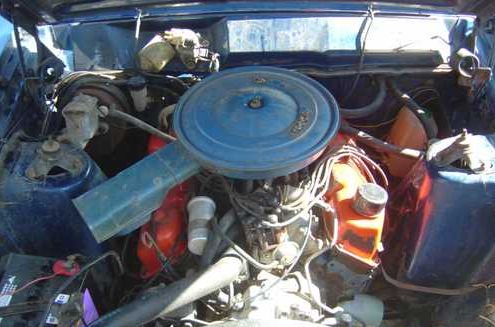 |
|||||||||||||||||||||||||||||||||||||||||||
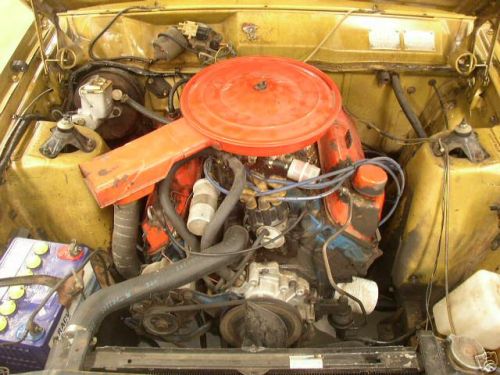 |
|||||||||||||||||||||||||||||||||||||||||||
|
It would appear that this style of aircleaner was superseded by the ‘second’ style four barrel aircleaner as seen further up, before giving way to the ‘third’ style aircleaner as seen below. |
|||||||||||||||||||||||||||||||||||||||||||
|
XC’s, which switched to four barrel carb’s, used the ‘third’ type aircleaner with tapered snorkel. |
|||||||||||||||||||||||||||||||||||||||||||
|
As found on XC Cobras. |
|||||||||||||||||||||||||||||||||||||||||||
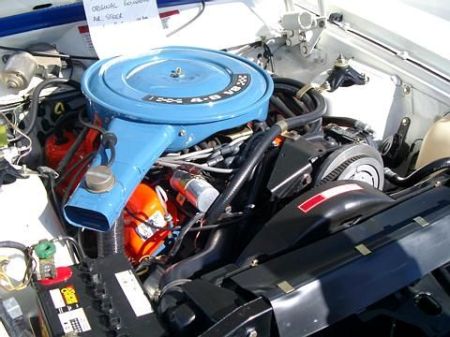 |
|||||||||||||||||||||||||||||||||||||||||||
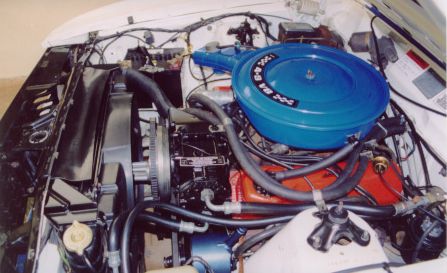 |
|||||||||||||||||||||||||||||||||||||||||||
|
This was done because the 302C now had the four barrel Carter Thermoquad carburetor. |
|||||||||||||||||||||||||||||||||||||||||||
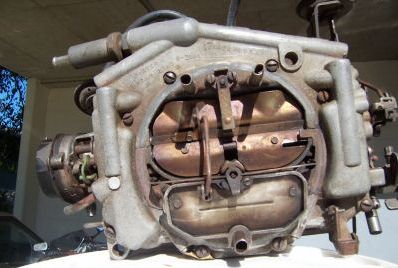 |
|||||||||||||||||||||||||||||||||||||||||||
|
The earlier 302c’s fitted to XA and XB’s used a two barrel Stromberg WW carb as shown on this engine. |
|||||||||||||||||||||||||||||||||||||||||||
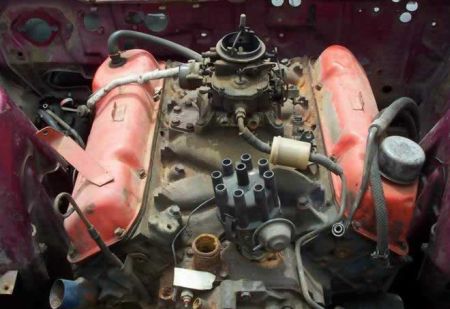 |
|||||||||||||||||||||||||||||||||||||||||||
|
Note that 302C heads did not have anything cast on the head in the corner, and they came with the second type rocker covers with the sharp corners to the ribbed box surrounding the ‘Power by Ford’. |
|||||||||||||||||||||||||||||||||||||||||||
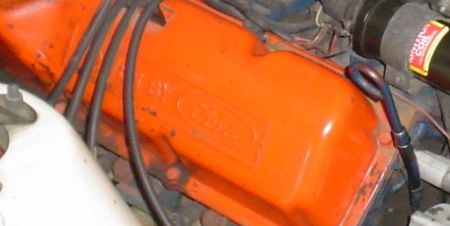 |
|||||||||||||||||||||||||||||||||||||||||||
|
Visitors may want to visit this page to get an insight of what can happen here in the U.K. when 302C heads turn up in unexpected places, and the benefits they can have. |
|||||||||||||||||||||||||||||||||||||||||||
|
For the XD and XE Falcons, the 302ci engine was, like the 351ci, metricised to become the 4.9, and it used the same air cleaner assembly as on the 5.8 litres, but the displacement and ‘four barrel’ stickers on the air cleaner were blue, rather than the red which was used for the 5.8. |
|||||||||||||||||||||||||||||||||||||||||||
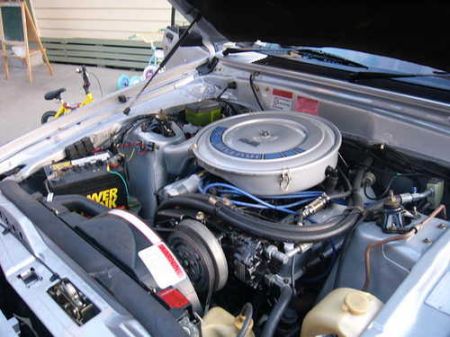 |
|||||||||||||||||||||||||||||||||||||||||||
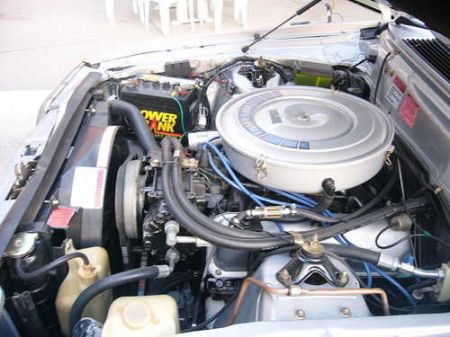 |
|||||||||||||||||||||||||||||||||||||||||||
|
This is all very well, but, if you are confronted with an Australian Cleveland style engine fitted to a car, and you are not sure whether it is a 302C or a 351C, is there any way of telling the heads apart, bearing in mind that the heads will have no numbers cast in the corners and you can’t take the heads off ? |
|||||||||||||||||||||||||||||||||||||||||||
|
The answer is: yes, there is. |
|||||||||||||||||||||||||||||||||||||||||||
|
This is a 351C from an XB GT. |
|||||||||||||||||||||||||||||||||||||||||||
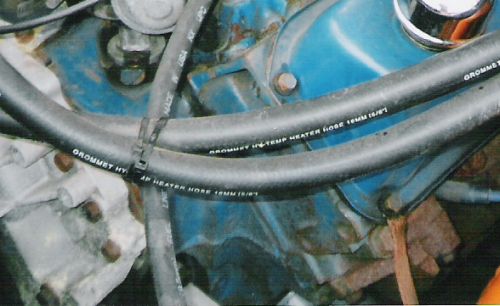 |
|||||||||||||||||||||||||||||||||||||||||||
|
Note the front edge of the head, where it meets the block. |
|||||||||||||||||||||||||||||||||||||||||||
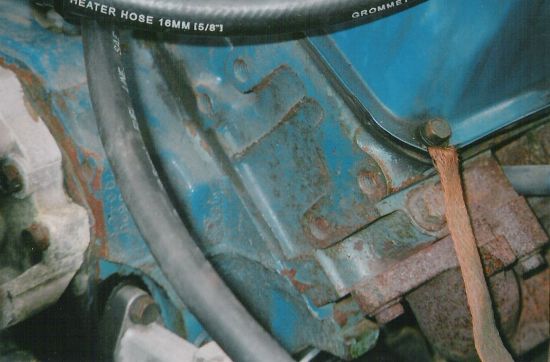 |
|||||||||||||||||||||||||||||||||||||||||||
|
Note that this front edge is straight. Pay particular attention to the mating area ‘below’ the two threaded bolt holes at the lower - that is exhaust manifold - side of the head. |
|||||||||||||||||||||||||||||||||||||||||||
|
Here is a similar view of Mike’s 302C Australian heads fitted to his US 351C block in his 1973 Mustang here in the U.K. |
|||||||||||||||||||||||||||||||||||||||||||
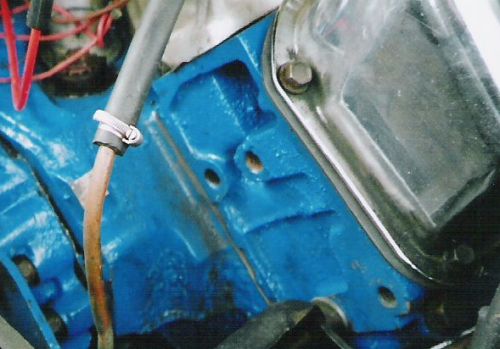 |
|||||||||||||||||||||||||||||||||||||||||||
|
Can you see that there are two cast ‘tangs’ or ‘dimples’ along the front edge of the head where it mates to the block. This is how you tell a 302C head while it is on the car. |
|||||||||||||||||||||||||||||||||||||||||||
|
Here is another photo. |
|||||||||||||||||||||||||||||||||||||||||||
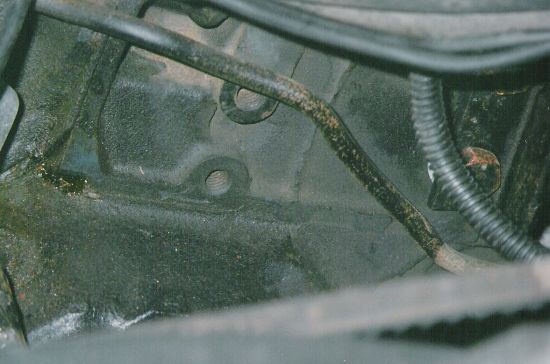 |
|||||||||||||||||||||||||||||||||||||||||||
|
To better illustrate, here are two pictures originally posted on the FordForums discussion board. Thanks to whoever posted them. |
|||||||||||||||||||||||||||||||||||||||||||
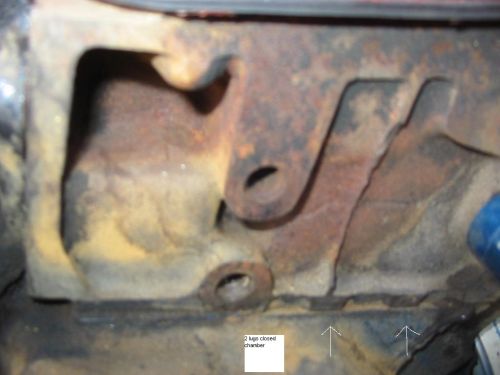 |
|||||||||||||||||||||||||||||||||||||||||||
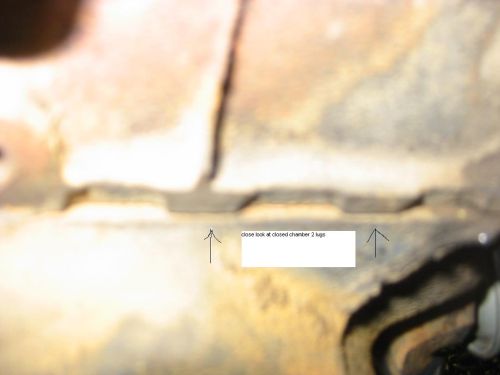 |
|||||||||||||||||||||||||||||||||||||||||||
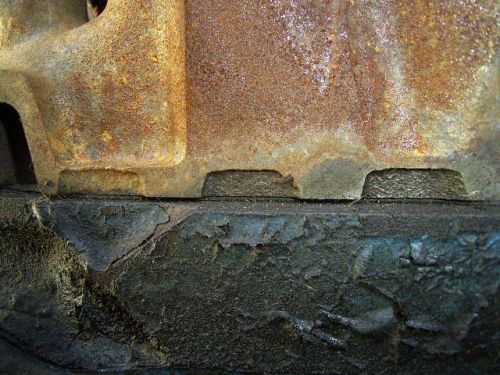 |
|||||||||||||||||||||||||||||||||||||||||||
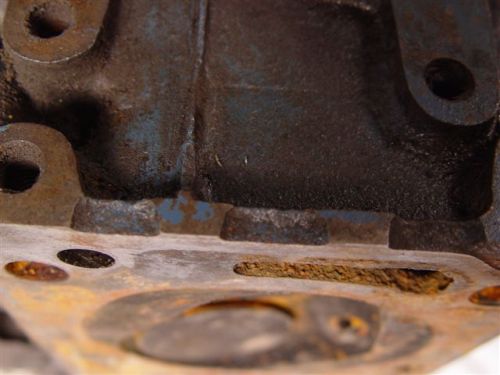 |
|||||||||||||||||||||||||||||||||||||||||||
|
The open chamber 351C head has only one ‘tang’ or ‘dimple’, as below. |
|||||||||||||||||||||||||||||||||||||||||||
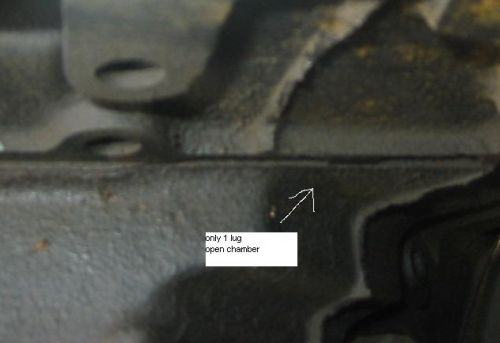 |
|||||||||||||||||||||||||||||||||||||||||||
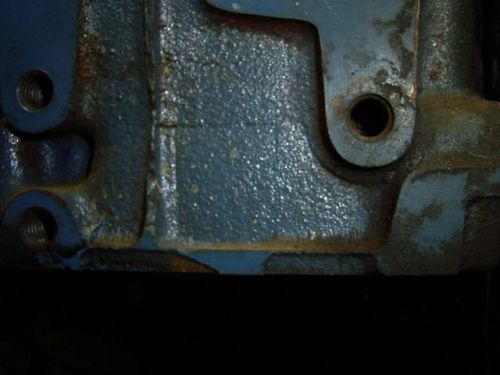 |
|||||||||||||||||||||||||||||||||||||||||||
|
While it would appear that the dimples look good, we must be aware that it is not a completely fool-proof way of telling 302C heads from 351C heads. Consider these 302C heads, which have no dimples at all. |
|||||||||||||||||||||||||||||||||||||||||||
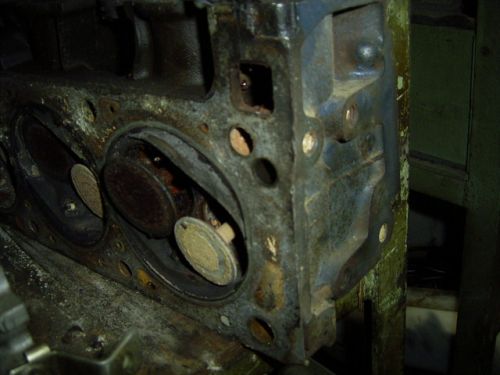 |
|||||||||||||||||||||||||||||||||||||||||||
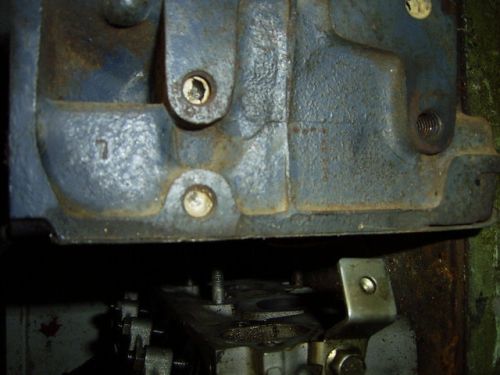 |
|||||||||||||||||||||||||||||||||||||||||||
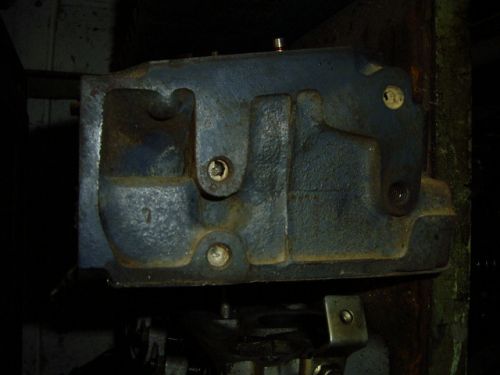 |
|||||||||||||||||||||||||||||||||||||||||||
|
The only sure fire way of checking is to take the heads off. Hopefully, though, the dimples provide a useful indication. |
|||||||||||||||||||||||||||||||||||||||||||
|
Back to contents |
|||||||||||||||||||||||||||||||||||||||||||
|
The Windsor engines |
|||||||||||||||||||||||||||||||||||||||||||
|
The Windsor family of V8 engines originated in 1962 when in 221ci form it debuted in the U.S. Fairlane and Falcon. It was a lightweight engine for its size, taking full advantage of new thin wall casting techniques. Mid year a 260ci version became available, and then, in 1963 they introduced the 289ci capacity version, which became more famous a year later when used to power the new Mustang. It was the 289W that first appeared in two barrel, 200hp form in the XR Falcon and the ZA Fairlane, and the 225hp, four barrel version appeared in the XR GT. This was the engine that created the Australian musclecar. |
|||||||||||||||||||||||||||||||||||||||||||
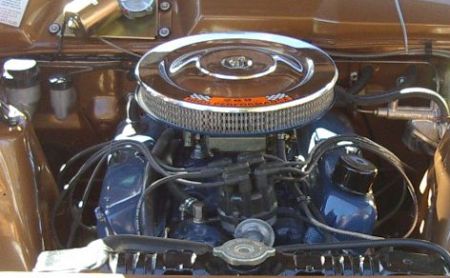 |
|||||||||||||||||||||||||||||||||||||||||||
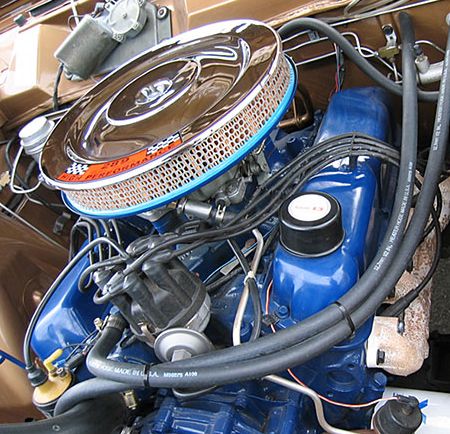 |
|||||||||||||||||||||||||||||||||||||||||||
|
The 289W 4V as fitted to the XR GT. |
|||||||||||||||||||||||||||||||||||||||||||
|
As mentioned on the previous page, the easiest way to tell a Windsor engine from a Cleveland is the top radiator hose enters the front of the inlet manifold horizontally, and the plane of the exhaust manifold to head mating is almost vertical. The rocker covers are also narrower. |
|
The 289W became the 302W for the XT GT Falcon where it was available in 230hp, four barrel form. But with a two barrel carb, and starting with the non- GT XT Falcons, it became the default V8 for Australian Fords until the introduction of the 302C. It was fitted to XT, XW and XY Falcons as a 302W 2V, and their corresponding ZB, ZC and ZD Fairlanes. |
||||||||||||||||||||||||
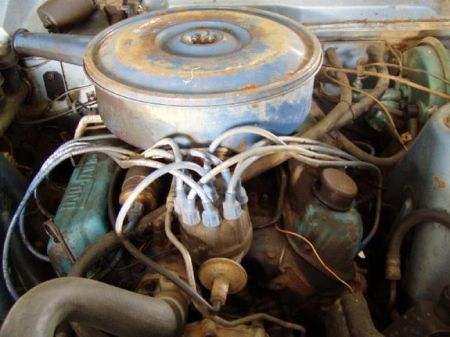 |
||||||||||||||||||||||||
|
302W as fitted to a ZB Fairlane. |
||||||||||||||||||||||||
|
And the ZD. |
||||||||||||||||||||||||
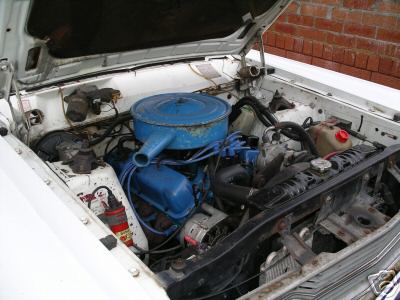 |
||||||||||||||||||||||||
|
And in four barrel form as fitted to the XT GT. |
||||||||||||||||||||||||
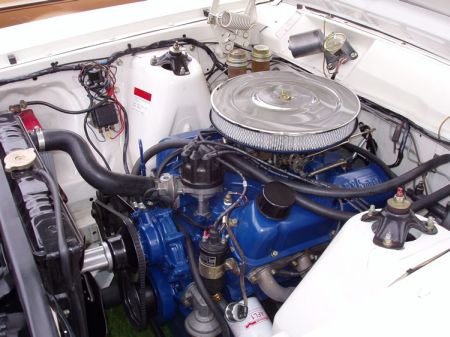 |
||||||||||||||||||||||||
|
Note that the GT 302W open element air cleaner has no decal, unlike the 289W GT engine. |
||||||||||||||||||||||||
|
The Windsor series of engines had their own distinctive ‘Power by Ford’ rocker covers too. |
||||||||||||||||||||||||
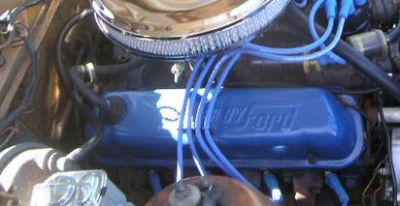 |
||||||||||||||||||||||||
|
This is a 302W fitted to an XW GS. |
||||||||||||||||||||||||
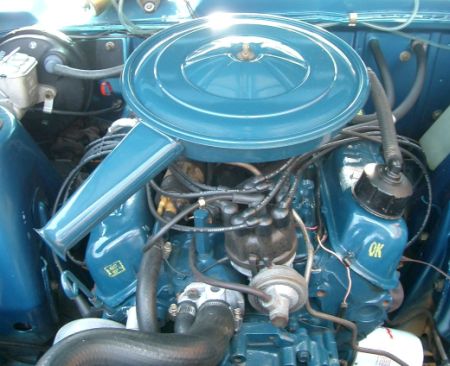 |
||||||||||||||||||||||||
|
Note that this engine uses a small snorkel, shallow depth air cleaner that became very much the standard air cleaner fitted to two barrel Windsor engines, two barrel Cleveland engines - see the photos of the 302C’s near the top of the page - and the straight six clylinder engines. |
||||||||||||||||||||||||
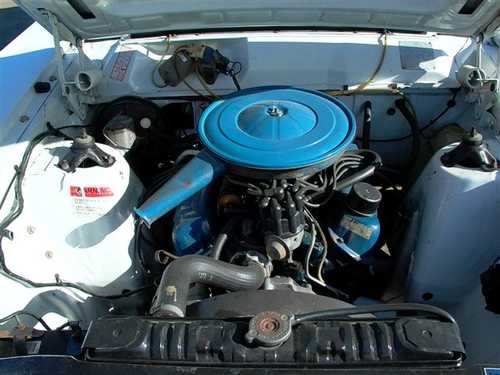 |
||||||||||||||||||||||||
|
But, air conditioning equipped cars came with the larger air cleaner as originally seen on the ZB and ZD further up this section. |
||||||||||||||||||||||||
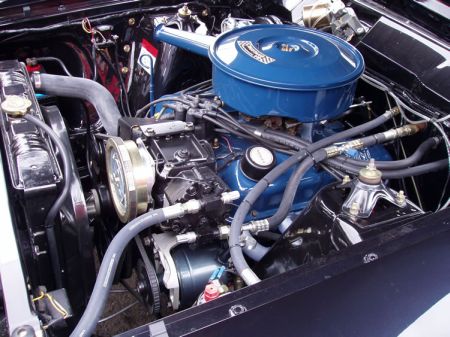 |
||||||||||||||||||||||||
|
And on this XY 302W powered GS. |
||||||||||||||||||||||||
|
Both these air cleaners differed quite radically from those fitted to eqivalent engines in US vehicles, a 1970 302-2V equipped Torino below. |
||||||||||||||||||||||||
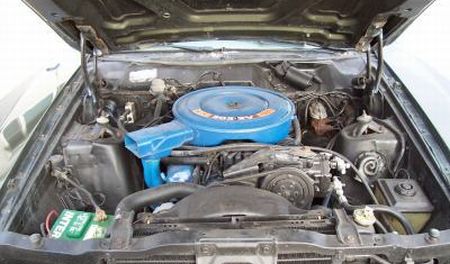 |
||||||||||||||||||||||||
|
And a 1972 Mustang. |
||||||||||||||||||||||||
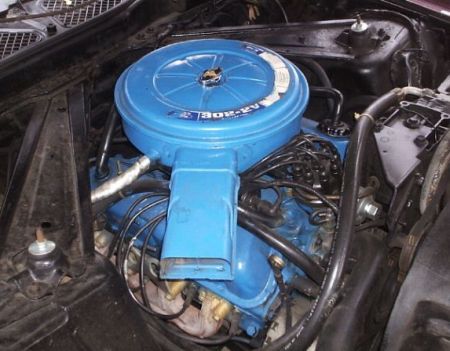 |
||||||||||||||||||||||||
|
351ci Windsor |
||||||||||||||||||||||||
|
The 351 Windsor was introduced by Ford Australia as their big stick. As the musclecar competition hotted up, and Holden were known to be introducing a 350ci powered version of their Monaro GTS, Ford opted to fit a four barrel version of the 351W to their XW GT’s. As was mentioned on the previous page, this turned out to be relatively short lived, because they switched to 351C’s midway through the XW GT’s life. However, in a departure for Ford, the ZC Fairlane was also fitted with the 351W 4V engine. Previously, all Fairlanes were two barrel carbed, and they reverted back to this policy right up until the emission equipped ZH Fairlane of 1976, fitted then with either a 302C 4V or the 351C 4V. This makes the 351W 4V equipped ZC Fairlane quite unique. |
||||||||||||||||||||||||
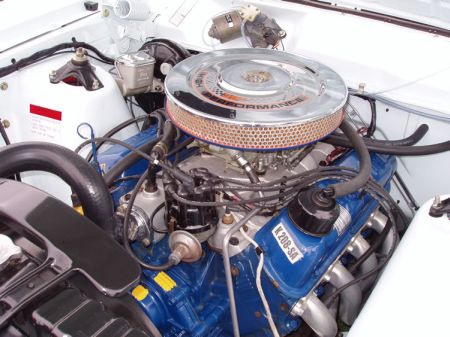 |
||||||||||||||||||||||||
|
This is a 351W 4V manual transmission equipped XW GT. Note the engine code number sticker ‘K208-SA’ fitted to the front of the rocker cover. |
||||||||||||||||||||||||
|
I mentioned that this was a four speed car because those cars came with the chrome, open element air cleaner, as did both the manual and automatic XW GT’s fitted with the 351C. |
||||||||||||||||||||||||
|
Automatic 351W XW GT’s had a full air cleaner. |
||||||||||||||||||||||||
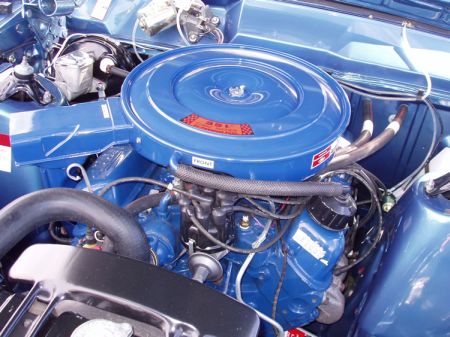 |
||||||||||||||||||||||||
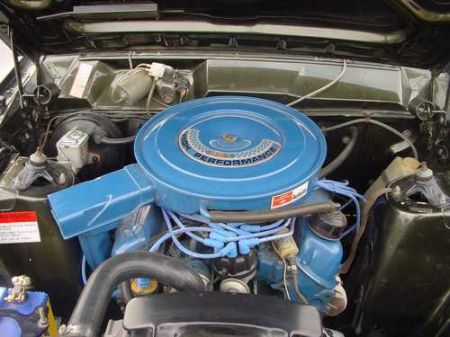 |
||||||||||||||||||||||||
|
Which was the same air cleaner assembly as fitted to the 351W 4V engines in ZC Fairlanes, as shown in this brochure photo. |
||||||||||||||||||||||||
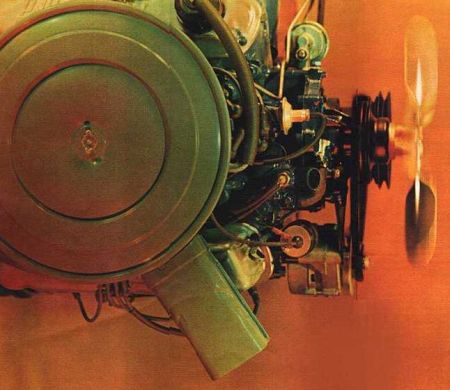 |
||||||||||||||||||||||||
|
And is like no other air cleaner fitted to any other Australian Ford. |
||||||||||||||||||||||||
|
But was the air cleaner fitted to 1969 351W equipped Mustangs, whether in two barrel or four barrel carb equipped, as shown below. |
||||||||||||||||||||||||
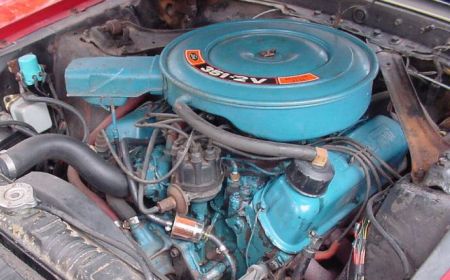 |
||||||||||||||||||||||||
|
Note that this is different from the air cleaner fitted to 351W engines in 1970 Mustangs, which moved the valve cover hose on the air cleaner from the front to the side. |
||||||||||||||||||||||||
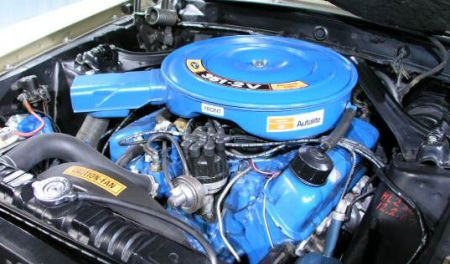 |
||||||||||||||||||||||||
|
The XW GTHO Phase 1 used a Holley carburetor. It’s Ford part number was C8OF-9510-C, and it’s Holley List number was 3795-1. Here is an unrestored Phase1 engine bay. |
||||||||||||||||||||||||
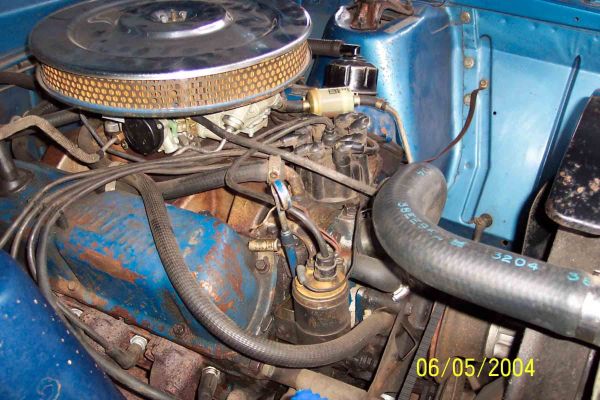 |
||||||||||||||||||||||||
|
Note the automatic choke, and the choke heat pipe running over the valve cover to the exhaust manifold. |
||||||||||||||||||||||||
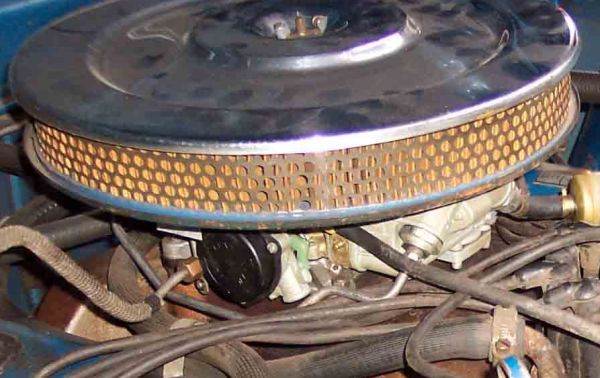 |
||||||||||||||||||||||||
|
Note also that the Holley fitted to the Phase1 was a 600cfm. |
||||||||||||||||||||||||
|
Back to contents |
||||||||||||||||||||||||
|
The Straight Six |
||||||||||||||||||||||||
|
Ford Australia has a great reputation for using straight six cylinder engines in its cars, from the very first Falcons, right up to todays sophisticated fuel injected, computer controlled and turbocharged monsters like the F6. |
||||||||||||||||||||||||
|
Ford fitted their six cylinder engine to the first XK Falcons in 144ci and 170ci Pursuit sizes. The engine that followed were derivatives of this engine, offered in increasing sizes achieved by lengthening the stroke or increasing the bore. First to appear was the 200ci Super Pursuit version in the XM, followed by the the 170ci becoming the 188ci and the 200ci becoming the 221ci in the XT. The ‘big’ 250ci six arrived for the XY Falcon, and has been the default size for Ford’s big six ever since. The XY range also saw the standardisation of the sixes to two sizes, 200ci and 250ci, and with the XC and the turn to metric, became the 3.3 and 4.1 litres respectively. With the XC range Ford also changed the cylinder head on the 3.3/4.1 to a cross flow design to aid emissions. Further refinement came on the XD when both engines were offered with alloy cylinder heads made for Ford by Honda, and in February, 1983, the first fuel injected sixes were released for the XE. By this time, Ford were a six cylinder only car company, having dropped their V8s in November, 1982. |
|
The 250 2V was an interesting development for Ford Australia, and in some respects mirrors their desire to take a U.S. sourced engine and make it their own, and in doing so, make it better. The Ford six was a good solid engine marred by poor breathing capabilities brought on largely by its non-crossflow cylinder head, and especially by its log shaped inlet manifold which was cast as an integral part of the head. |
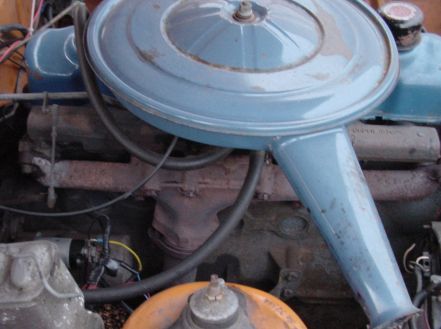 |
||||||||||||||||||||||||||
|
In this photo of John’s 3.3 litre six, you can see the intake manifold under the air cleaner. It is the large cast ‘log’ next to the cylinder head. Underneath it is the exhaust manifold and downpipe. |
||||||||||||||||||||||||||
|
Better shown in this photo of a six fitted to an American Ford. |
||||||||||||||||||||||||||
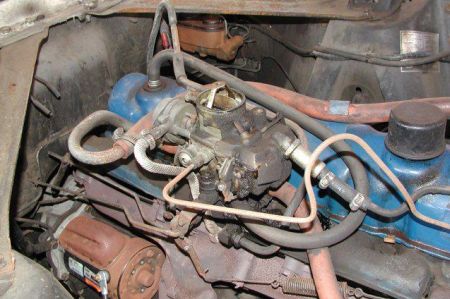 |
||||||||||||||||||||||||||
|
Ford Australia appreciated the weakness of this design and took the bold step of designing their own cylinder head with a separate aluminium intake manifold which would accept a twin barrel carb, hence the 2V description. |
||||||||||||||||||||||||||
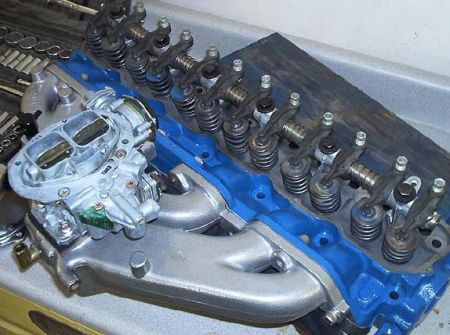 |
||||||||||||||||||||||||||
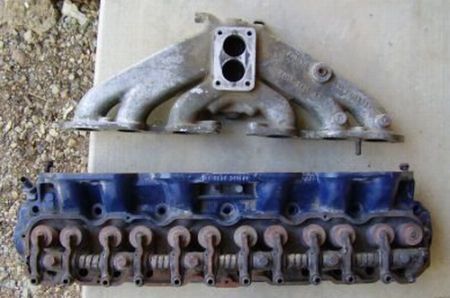 |
||||||||||||||||||||||||||
|
The 250 2V was only offered on the XY and XA model Falcons. For the XB, Ford reverted back to the ‘log’ manifold with a single barrel carb. The reason for this is unclear, but it may have been an attempt to encourage buyers up to move up to the new 302C V8 if they wanted more performance. |
||||||||||||||||||||||||||
|
In the above photo, the inlet manifold has been fitted with a Holley two barrel carburettor. From the factory, the 250 2V got the same Stromberg WW two barrel carb as the 302ci V8’s, shown below. |
||||||||||||||||||||||||||
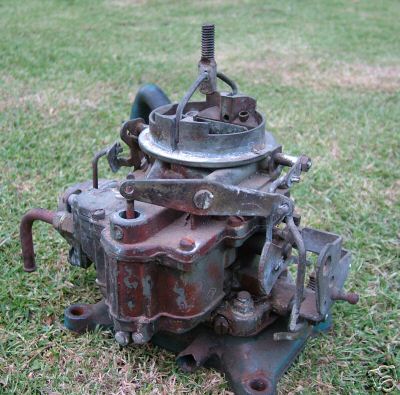 |
||||||||||||||||||||||||||
|
Cars fitted with the 2V engine got their own identifying badges. |
||||||||||||||||||||||||||
|
The XY badge. |
||||||||||||||||||||||||||
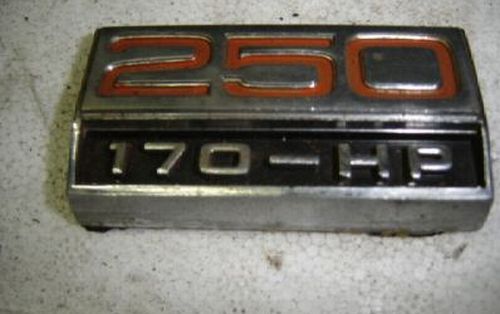 |
||||||||||||||||||||||||||
|
The XA badge |
||||||||||||||||||||||||||
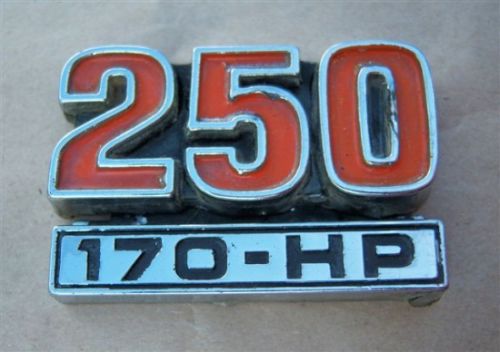 |
||||||||||||||||||||||||||
|
This was actually a clever coupling of the normal ‘250’ badge, with a separate ‘170-HP’ tag, as shown below. |
||||||||||||||||||||||||||
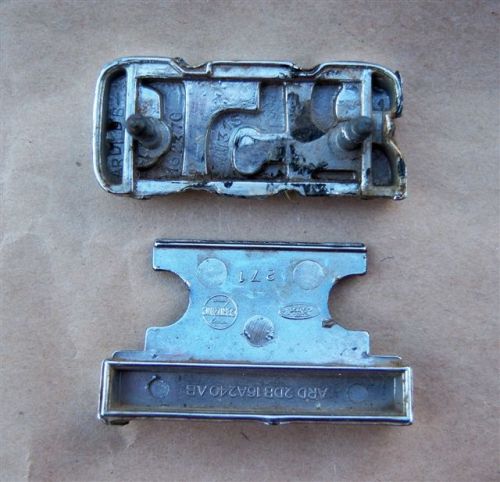 |
||||||||||||||||||||||||||
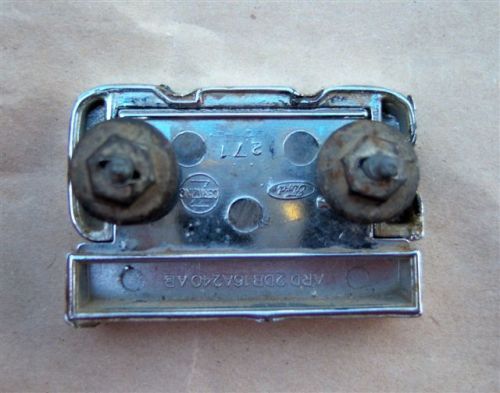 |
||||||||||||||||||||||||||
|
Thanks to Dave for the XA badges above, and the XY 250 2V six photos below. |
||||||||||||||||||||||||||
|
The 250ci 2V Australian six as fitted to an XY ute. |
||||||||||||||||||||||||||
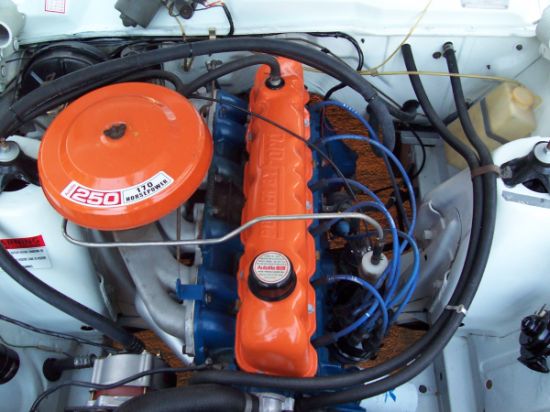 |
||||||||||||||||||||||||||
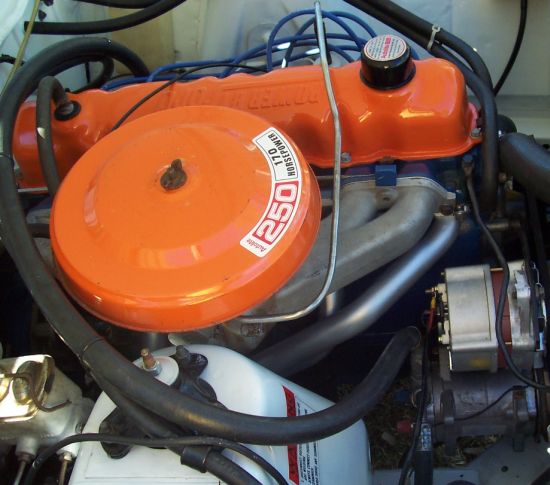 |
||||||||||||||||||||||||||
|
Original air cleaner and decal |
||||||||||||||||||||||||||
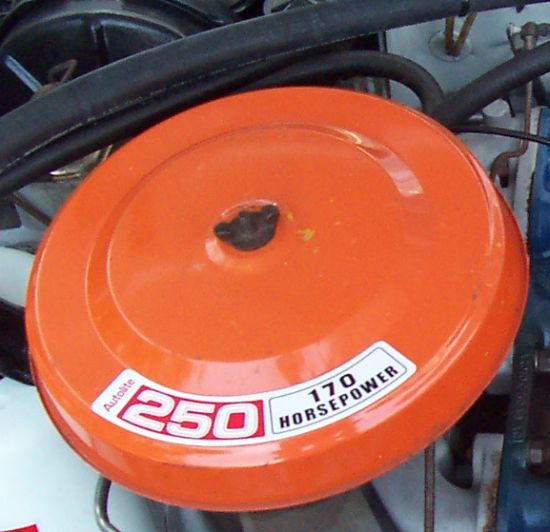 |
||||||||||||||||||||||||||
|
The 250 2V head and its associated intake manifold have become very popular with tuners of the six, and there is a market for shipping them to the U.S. to be retrofit onto their Ford six. Tuners in Australia have always been happy to tune away fitting tubular extractors to their engines, as below. |
||||||||||||||||||||||||||
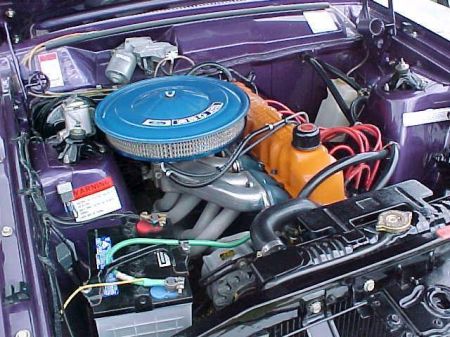 |
||||||||||||||||||||||||||
|
Back to contents |
||||||||||||||||||||||||||
|
Some six cylinder details here |
||||||||||||||||||||||||||
|
Liquified Petroleum Gas |
||||||||||||||||||||||||||
|
Australia has had a strong tradition of running its car engines on LPG gas. In fact, you can buy cars in Australia that run on LPG only, with no provision for using petrol, and several companies have been set up to import LPG powered Australian Fords to the U.K. where the benefits of our low taxation - at the present - on LPG fuel could be used to advantage. Here, however, are some of the older engines and the retrofitted LPG systems. |
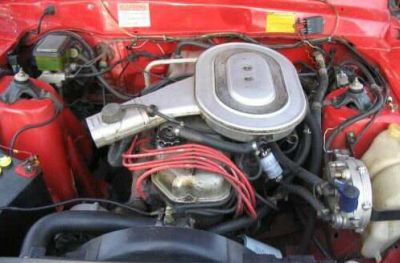 |
||||||||||||||
|
4.1litre alloy head six in an XD Falcon. |
||||||||||||||
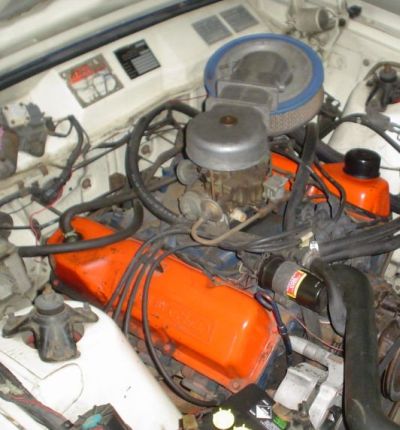 |
||||||||||||||
|
302C V8 in an XC Falcon. Note the black and white plate on the scuttle which is the LPG compliance plate. |
||||||||||||||
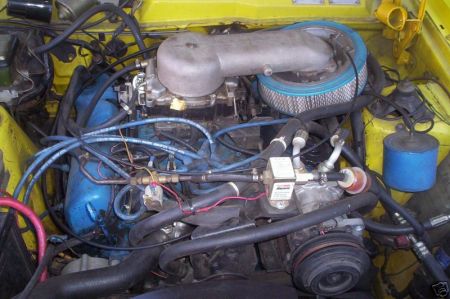 |
||||||||||||||
|
351C also in an XC. |
||||||||||||||
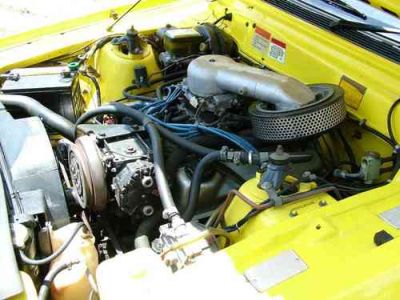 |
||||||||||||||
|
5.8litre Cleveland V8 in a ZJ Fairlane. |
||||||||||||||
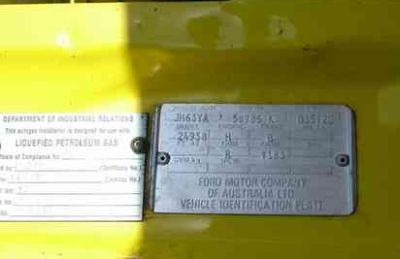 |
||||||||||||||
|
One of the two factory vehicle compliance plates on the ZJ, and alongside it, the Liquified Petroleum Gas compliance plate as issued by the Department of Environmental Relations. |
|
Back to contents |
|||
|
[Australian Ford Register UK] [History] [The Cars] [Members] [Bits and Pieces] [Contents] [Model Changes - Dashes] [Vinyl Roofs] [Doorhandles - Tail lamps - Glass] [Underneath] [Underneath 2] [Thorn Red] [Spoilers - Horn Cars] [Styling - Bonnets] [Grand Sports] [Metricification] [Grand Sport details - P5 LTD] [Scoops and vents] [Wheels] [The other XR8 - P6 LTD] [Superbird] [Compliance Plates] [Engines] [Engines2] [Rust] [Stampings] [Falcons] [Literature] [Some UK background] [One owner] [Bits and Pieces 2] [Untitled124] [Links] [Visitors] [Events] [AusCCA] [Site History] |
